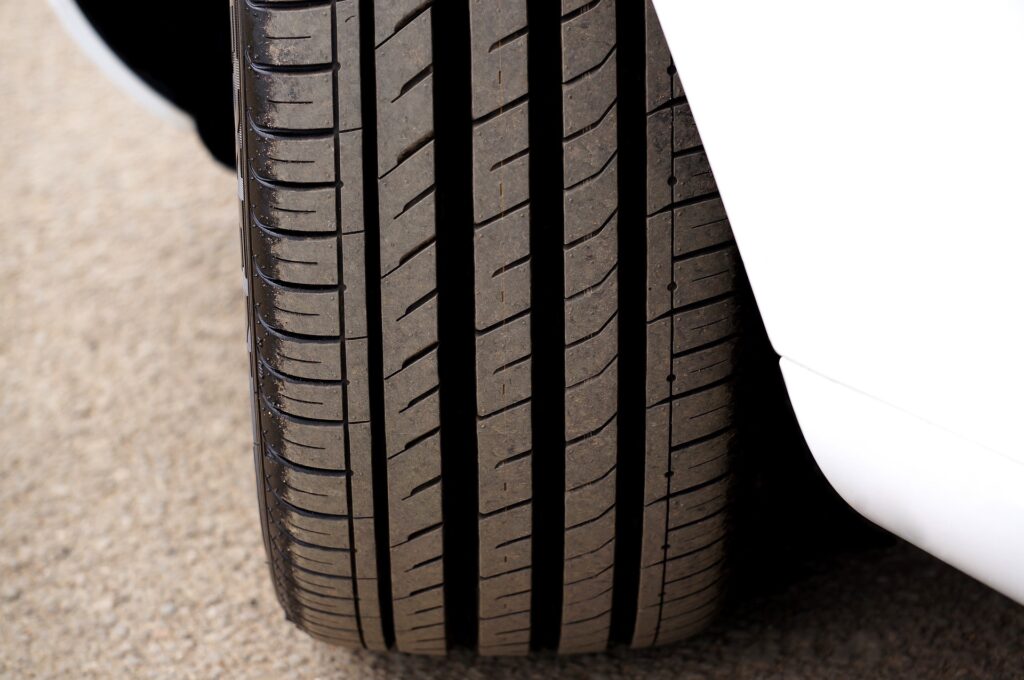
Along with checking your oil level, the functioning of your lights and topping up the screen wash, there’s another quick and simple check you can make to your car that could save you thousands of pounds and will keep you safe on the road. Checking your tyre’s tread depth is the best way to avoid the scary experience of aquaplaning and, in case you are pulled over by the police, a £2,500 fine. In the UK, the fine and three penalty points will apply per tyre as well, so four tyres below the legal limit could mean losing your licence and being £10,000 out of pocket. Here are three simple ways to ensure your tyres are above the legal limit.
Tread wear indicators
Many tyre brands use inbuilt horizontal strips of rubber recessed into the tyre tread, called tread wear indicators, or ‘cross ribs’. These horizontal strips are 1.6mm proud of the tyre cap. Once these strips are worn to the same level as the tyre tread, it is time to replace the tyre. This is an approximate measure, however, so it is recommended to get a new tyre well before the tread reaches the tread wear indicators.
The twenty pence test
An easy and (almost) free way to monitor your tread depth is the twenty pence test. Take a twenty pence piece and place it into the central tread grooves of your tyre. If the tread covers the words engraved in the outer band of the coin, the tread is above the legal limit. But if you can see any of the engraved words in the outer band, then your tyres are likely below the legal limit and need to be checked by a qualified professional.
Depth gauges
To monitor your tyres at home and be absolutely sure, there is no better investment than a tread depth gauge; a small tool that can be bought for as little as a few pounds. These dedicated gauges are the most accurate and efficient way of checking tread depth because they measure the wear of a tyre to the millimetre. If you own more than one vehicle or enjoy motor sports, this is the ideal way to keep your tyres in top condition.
Why is tread depth so important?
The contact patch of your tyres are grooved for the sole purpose of shifting one gallon of water per second from the path of each wheel during heavy rain. The legal limit for tread depth is 1.6mm, though some manufacturers suggest replacement as early as 3mm. Tests by UK technical organisation MIRA, proved that treads below 3mm performed with significantly longer stopping distances than those over 3mm. In wet conditions, there can be as much as a 44% increase in the time it takes to safely stop a car and that is with a legally worn tyre. It only takes a minute and twenty pence to check your tyre’s tread, so add this little trick to your maintenance routine for happier motoring.
Oaks Services are expert tyre fitters and can supply the right tyres to suit any make and model of car. We also sell part-worn tyres that have been professionally checked to meet the legal standards and can advise on tyre upgrades for winter tyres and runflat tyres. For more information about our services, or to book an appointment, get in touch with us today.

